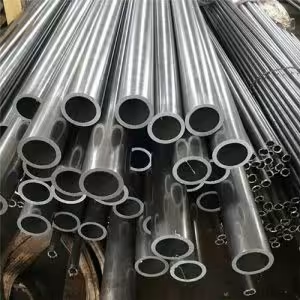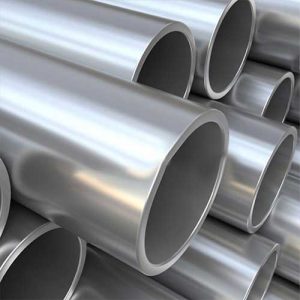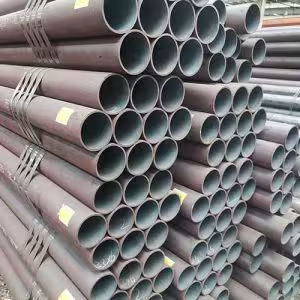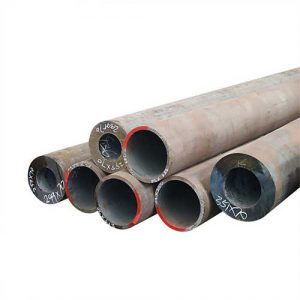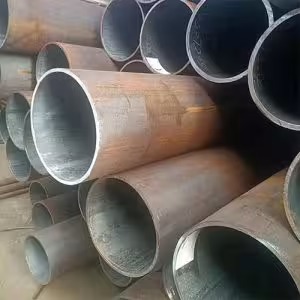Welcome to My Blog!
Before we dive into the content, I’d love for you to join me on my social media platforms where I share more insights, engage with the community, and post updates. Here’s how you can connect with me:
Facebook:https://www.facebook.com/profile.php?id=61565500692293
Now, let’s get started on our journey together. I hope you find the content here insightful, engaging, and valuable.
Introduction
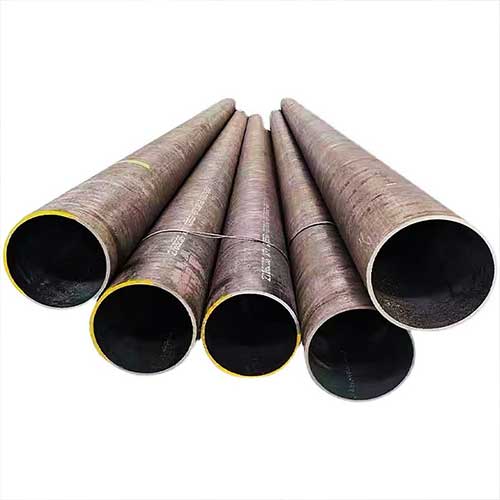
Boiler tubes play a crucial role in a wide range of industries, from power generation to chemical processing and beyond. The efficiency and reliability of boilers largely depend on the quality and type of boiler tubes used. Understanding the different types of boiler tubes is essential for maintaining efficient operations and ensuring the longevity of the boiler system.
This comprehensive guide will explore the various types of boiler tubes, their applications, advantages, and how to select the right type for your system. We will also discuss maintenance practices to keep these tubes functioning efficiently for long-term use. By the end of this article, you will have a deeper understanding of the types of boiler tubes available and how to optimize their performance for efficient operations.
What Are Boiler Tubes?
Boiler tubes are critical components of boilers, used to transfer heat from hot gases or combustion products to water or steam. These tubes are exposed to high temperatures, pressures, and corrosive environments, which makes their material selection and design crucial for boiler efficiency and safety. They are typically made of carbon steel, alloy steel, or stainless steel, depending on the specific requirements of the boiler system.
Boiler tubes can be classified into two main categories: water-tube boilers and fire-tube boilers. Both types have different designs and operational characteristics, suited for specific applications. The choice between water-tube and fire-tube designs depends on the size, capacity, and type of fuel being burned in the boiler.
Types of Boiler Tubes
There are several different types of boiler tubes used in various industrial applications. The type of boiler tube selected depends on factors such as pressure, temperature, and the type of fuel used in the boiler. Below are the most common types of boiler tubes:
1. Water-Tube Boiler Tubes
Water-tube boiler tubes are widely used in high-pressure applications such as power plants and industrial facilities. In these boilers, water flows through the tubes while hot gases pass around them, transferring heat to the water. The design allows for higher pressures and temperatures, making water-tube boilers suitable for large-scale operations.
Advantages of Water-Tube Boilers:
- Can handle high-pressure applications.
- Faster heat transfer rates.
- More efficient for large-scale operations.
Common Applications:
- Power generation plants.
- Chemical processing plants.
- Industrial steam boilers.
2. Fire-Tube Boiler Tubes
Fire-tube boiler tubes are used in smaller, low-pressure boilers. In this design, hot gases pass through the tubes, and water surrounds them. Fire-tube boilers are generally easier to install and maintain compared to water-tube boilers. They are more suitable for smaller operations where lower pressure is required.
Advantages of Fire-Tube Boilers:
- Simpler design and lower cost.
- Easier maintenance and repair.
- Suitable for low to medium-pressure applications.
Common Applications:
- Commercial heating systems.
- Small-scale industrial operations.
- Steam heating for buildings.
3. Superheater Tubes
Superheater tubes are a type of water-tube boiler tube designed to increase the temperature of steam beyond its boiling point, without increasing pressure. This superheated steam is used in turbines to generate electricity in power plants.
Advantages of Superheater Tubes:
- Increases the efficiency of steam turbines.
- Reduces moisture in steam, preventing turbine blade corrosion.
Common Applications:
- Power plants.
- Steam turbine operations.
4. Reheater Tubes
Reheater tubes are similar to superheater tubes, but their function is to reheat steam that has been used in the high-pressure stages of a turbine before it is sent to the lower pressure stages. This improves the efficiency of the turbine.
Advantages of Reheater Tubes:
- Increases thermal efficiency of steam cycles.
- Allows for more efficient electricity generation.
Common Applications:
- Large-scale power generation.
- Combined-cycle plants.
5. Economizer Tubes
Economizer tubes are heat exchangers used to preheat feedwater before it enters the boiler. By utilizing waste heat from exhaust gases, economizer tubes improve the overall efficiency of the boiler system.
Advantages of Economizer Tubes:
- Reduces fuel consumption.
- Increases overall system efficiency.
Common Applications:
- Power generation plants.
- Industrial boilers with high fuel consumption.
6. Heat Recovery Steam Generator (HRSG) Tubes
HRSG tubes are used in combined-cycle power plants to recover heat from gas turbine exhaust and generate steam. These tubes are crucial for improving the overall efficiency of power plants by utilizing waste heat for electricity generation.
Advantages of HRSG Tubes:
- Improves the efficiency of combined-cycle power plants.
- Reduces emissions and fuel consumption.
Common Applications:
- Combined-cycle power plants.
- Cogeneration plants.
7. Air Preheater Tubes
Air preheater tubes are used to preheat combustion air by recovering heat from exhaust gases. Preheating the air increases combustion efficiency and reduces fuel consumption.
Advantages of Air Preheater Tubes:
- Improves combustion efficiency.
- Reduces fuel consumption and emissions.
Common Applications:
- Large industrial boilers.
- Power generation plants.
Comparison of Different Types of Boiler Tubes
Understanding the different types of boiler tubes is essential for selecting the right one for your boiler system. Below is a comparison table that outlines the key characteristics of the most commonly used types of boiler tubes.
| Type of Boiler Tube | Pressure Range | Temperature Range | Efficiency | Common Applications |
|---|---|---|---|---|
| Water-Tube Boiler Tubes | High | High | High | Power plants, chemical processing plants |
| Fire-Tube Boiler Tubes | Low to Medium | Low to Medium | Moderate | Commercial heating, small-scale operations |
| Superheater Tubes | High | Very High | High | Steam turbines, power plants |
| Reheater Tubes | High | Very High | Very High | Power plants, combined-cycle plants |
| Economizer Tubes | Medium | Medium | High | Power generation, industrial boilers |
| HRSG Tubes | High | High | Very High | Combined-cycle power plants |
| Air Preheater Tubes | Medium | Medium | High | Large industrial boilers, power plants |
This comparison table provides a quick overview of the types of boiler tubes and their respective characteristics to help you choose the right one for your needs.
Factors to Consider When Choosing Boiler Tubes
When selecting boiler tubes for your operation, it is important to consider several key factors to ensure you choose the best option. Below are some important considerations:
1. Pressure and Temperature Requirements
The pressure and temperature conditions in your boiler system will determine the type of tube material and design required. Water-tube boilers are better suited for high-pressure, high-temperature applications, while fire-tube boilers are sufficient for lower pressure needs.
2. Material Selection
Boiler tubes are typically made of carbon steel, alloy steel, or stainless steel. The choice of material depends on the specific requirements of the boiler system, including corrosion resistance, heat tolerance, and pressure handling capacity.
3. Corrosion Resistance
In environments where the boiler tubes are exposed to corrosive elements, it is essential to select tubes that are corrosion-resistant. Alloy steel and stainless steel tubes offer superior corrosion resistance compared to carbon steel.
4. Efficiency and Heat Transfer
Some types of boiler tubes, such as water-tube and superheater tubes, offer higher heat transfer rates, which improves the overall efficiency of the system. Selecting tubes with efficient heat transfer properties can reduce fuel consumption and operating costs.
5. Maintenance Requirements
Consider the maintenance needs of the boiler tubes when making a selection. Some types of tubes, such as fire-tube boilers, are easier to clean and maintain compared to others. Regular maintenance is essential to ensure the longevity of the tubes and the efficient operation of the boiler system.
Best Practices for Maintaining Boiler Tubes
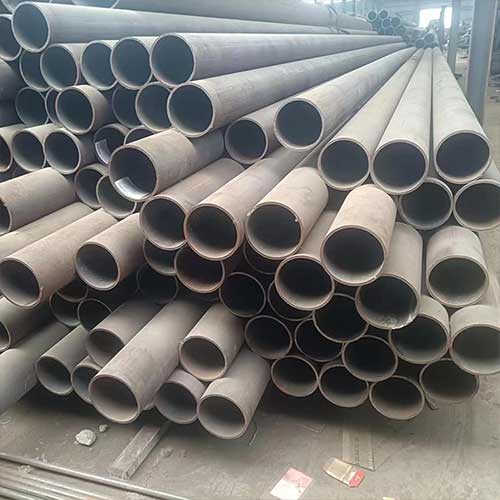
To ensure long-term performance and safety, it is essential to follow best practices for maintaining boiler tubes. Here are some important tips for maintaining your boiler tubes:
1. Regular Inspections
Conduct regular inspections of boiler tubes to check for signs of corrosion, scaling, or cracking. Early detection of issues can help prevent costly breakdowns and extend the life of the tubes.
2. Proper Cleaning
Boiler tubes should be cleaned regularly to prevent the buildup of soot, scale, and other deposits. These deposits can reduce heat transfer efficiency and increase fuel consumption. Using the appropriate cleaning methods, such as chemical cleaning or high-pressure water jetting, can help maintain efficiency.
3. Monitor Pressure and Temperature
Ensure that the boiler operates within the recommended pressure and temperature range to avoid overstressing the tubes. Operating outside the recommended limits can cause the tubes to weaken and fail prematurely.
4. Use of Corrosion Inhibitors
In boilers that operate in corrosive environments, using corrosion inhibitors can help protect the tubes from chemical damage. Corrosion inhibitors are chemical compounds that reduce the rate of corrosion, extending the life of the boiler tubes.
5. Timely Repairs and Replacements
If any boiler tubes show signs of wear, corrosion, or damage, they should be repaired or replaced immediately. Delaying repairs can lead to more serious issues and potentially cause a system failure.
Conclusion
Understanding the various types of boiler tubes and their applications is crucial for maintaining efficient boiler operations. Whether you are working in a power plant, industrial facility, or a smaller commercial operation, selecting the right type of boiler tube can significantly impact the efficiency, safety, and longevity of your boiler system.
By considering factors such as pressure, temperature, material selection, and maintenance requirements, you can ensure that your boiler tubes perform optimally and withstand the demanding conditions they are exposed to.
FAQ
What is the difference between water-tube and fire-tube boilers?
Water-tube boilers transfer heat to water inside the tubes, while fire-tube boilers transfer heat to water outside the tubes. Water-tube boilers handle higher pressures and temperatures, while fire-tube boilers are better for low-pressure applications.
What materials are boiler tubes made of?
Boiler tubes are typically made of carbon steel, alloy steel, or stainless steel. The material choice depends on the specific requirements, including pressure, temperature, and corrosion resistance.
How often should boiler tubes be inspected?
Boiler tubes should be inspected at least annually to check for signs of corrosion, scaling, or other damage. More frequent inspections may be required in high-pressure or high-temperature systems.
What are the benefits of using economizer tubes in a boiler system?
Economizer tubes preheat feedwater using waste heat from exhaust gases, improving the overall efficiency of the boiler system and reducing fuel consumption.
How can I improve the efficiency of my boiler tubes?
Regular cleaning, proper maintenance, and selecting the right type of boiler tube for your system can improve efficiency. Using corrosion inhibitors and monitoring operating conditions can also help extend the life and performance of your boiler tubes.



